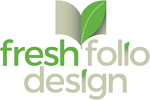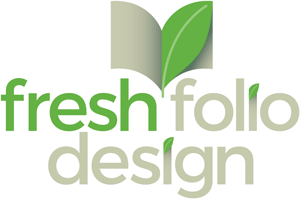We have been building a case to show how good design is the key to creating effective brochures that will enhance your brand and clearly communicate your message.
Last week we shared our process for color-correcting photos because having dynamic imagery enhances the quality of a brochure. Now that you have images that look great we are going to talk about how to approach cropping those images to best serve the design.
Design is not just pretty pictures and fun fonts, professional designers solve problems
A designer learns what the goal or purpose is for a brochure and then all decisions serve that purpose; including how to crop the images.
In order to illustrate this topic we are going to pull an image from a brochure that we created for Park District Risk Management (PDRMA). We’ll talk more about the specifics of how we used the images later in the article, but for now let’s talk through what to look for when you are first working with an image.
 We start with a stock image of a family out for a walk. In lower quality brochures the image is usually placed into the layout as provided. However, a designer will take the time to see if cropping the image would make for a better story.
We start with a stock image of a family out for a walk. In lower quality brochures the image is usually placed into the layout as provided. However, a designer will take the time to see if cropping the image would make for a better story.
In looking at this photo we see there is “dead space.” This refers to the part of the photo that is not the main subject and doesn’t bring any additional value to the image.
 We want to be discerning with how to handle dead space. We do need to give our eyes places to rest within an image, but too much space can confuse the viewer because the story the picture is telling isn’t clear. However, too little space and the image will start to feel cramped. Let’s look at 2 possible ways to crop this image and the story that each of them tells.
We want to be discerning with how to handle dead space. We do need to give our eyes places to rest within an image, but too much space can confuse the viewer because the story the picture is telling isn’t clear. However, too little space and the image will start to feel cramped. Let’s look at 2 possible ways to crop this image and the story that each of them tells.
Cropping #1
For this first cropping, we have removed some of the dead space. What remains would be considered “negative space.” While dead space is something that you want to avoid, negative space is a good thing for a photo.
Negative space is there to serve the focal point of the image. In this image the negative space helps to set the environment the family is walking in. A gravel path in a wooded area, possibly a forest preserve or park.
With this type of cropping we see the family as a cohesive unit. Remember how we talked about proximity a few weeks back? Objects that are close together read as a visual unit. In the article, we were talking about it in terms of graphics, but the same is true in photographs.
The story this cropping tells is a happy family out for an enjoyable walk. This is one possible solution for cropping. However, we want to show how a slightly different cropping can tell an entirely different story.
Cropping #2
This time we cropped in tighter on the family, and as a result we create an entirely different focus. We still see a happy family out for an enjoyable walk, however, because of the cropping the parents recede into the background and we focus more on the two kids and the dog.
This new cropping option emphasizes the similar color of the kids shirts. This harmony presents them as a unit, the way that the entire family looked in the first cropping.
Referencing concepts we talked about before, the contrast created by the white shirt on the boy grabs your attention, but the direction of both kids looking down causes your eye to shift toward the dog. Enhancing the composition is the fact that the dog is looking up and the leash creates a line to follow as well. The story of two kids enjoying enjoying a walk with their dog becomes the focus.
Slight adjustments in cropping can change the story that an image tells.
Of course the number of ways that an image can be cropped is practically endless. Remember at the beginning of this post that we said the images used were pulled from a brochure created for a client? We’d like to share how this image was ultimately used since it gives yet another example of how cropping can change the story an image tells.
To refresh your memory, the client is PDRMA; an association for Park Districts in Illinois. They approached us about creating a brochure for a program they were launching called PATH.
PATH stands for Positive Activities Toward Health (everybody loves a good acronym!). The purpose of this brochure was to inform members about the program, and communicate that simple and positive healthy life choices can make a difference in quality of life.
The family walking the dog image was one of four images used on the cover. Each image tells a story about positive choices. Whether it is drinking water, staying active by biking, working in your yard, or going for a walk.
Notice that the image we’ve been working with is no longer about a happy family out for an enjoyable walk. Now, this new cropping has changed the focus to a happy dog enjoying a walk with its owner.
For the purpose of this brochure, the image is communicating the ways that members can incorporate healthy choices into their life. Someone reading this brochure may think, “Yeah, I don’t think I am up for starting a gym membership, but I could take Rover out for a walk when I get home from work.”
The fact that it’s kids walking the dog, or any connection to the couple behind them isn’t even a part of the story any longer. The story that picture is now telling has completely changed because of intentional choices made in cropping the image.
We hope this provides a better appreciation of the potential solutions that cropping can create and results in your stopping to consider the ways you can enhance your brochures with a more thoughtful approach with your images.
If we can be of any assistance in helping you maximize the effectiveness of how images are used within your materials, please reach out and let’s start a conversation.







Leave a Reply